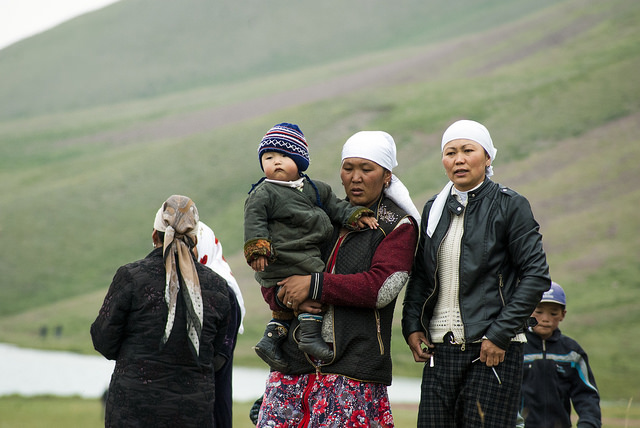Infrastructure in Kyrgyzstan
 The territory of modern-day Kyrgyzstan was once an important stop on the ancient silk road when brave traders needed to pass through the Tian Shan mountains. Today, many of the routes through the mountain passes remain the same.
The territory of modern-day Kyrgyzstan was once an important stop on the ancient silk road when brave traders needed to pass through the Tian Shan mountains. Today, many of the routes through the mountain passes remain the same.
Kyrgyzstan is a recovering ex-soviet state with infrastructure dating back to its occupation. Landlocked within the mountain range without many natural resources, international trade is difficult. The country uses the resources it does have to its benefit, the government is on good terms with many of its neighbors and as long as the current government does not follow the suit of former leaders, Kyrgyzstan is set to grow. However, infrastructure in Kyrgyzstan must improve along with its economy.
Traveling throughout Kyrgyzstan, although a challenge, is not impossible. Most travel takes place between its northern and southern regions; in the north, Bishkek, the capital city of Kyrgyzstan is the main destination and in the south, it is Osh, home to one of the oldest bazaars in the world. The capital is home to the nation’s only international airport but because air services do not match the safety specifications of many nations there is not a high demand for international air travel. It is in Bishkek where the main train line runs across the northern border to Kazakhstan.
The railways are the major trade lines in and out of Kyrgyzstan. Many of the roads in the country are not open all year round due to the winter conditions in the mountains. But because 14.9 percent of the economy and 48 percent of the workforce is based on agriculture, the roads are essential since they are the only way for the people to get their goods to a trade hub. The majority of the manufactured goods come from urban industrialized areas. The steep frozen mountains are a blessing and a curse to infrastructure in Kyrgyzstan. The blessing is that 79.4 percent of electricity produced in Kyrgyzstan is hydro-electric. The many rivers and streams that run down from the mountaintops are a perfect environment for generating electricity, cutting down the country’s need to import natural gas and petroleum.
With electricity comes the internet. Currently, around 1.9 million people in Kyrgyzstan use the internet. The number is set to grow over the next decade. With the help of the European Bank for Reconstruction and Development, Kyrgyzstan’s government is working to upgrade its domestic telecommunication systems. Much of the infrastructure in use is dated and left over from Soviet times.
The EBRD is not the only bank interested in improving the infrastructure of Kyrgyzstan. The Asian Development Bank has invested in Kyrgyzstan to help fight poverty and increase the country’s economic growth and sustainability. One way that the ADB is supporting the infrastructure of Kyrgyzstan is by allowing Kyrgyzstan’s entry into the Central Asian Regional Economic Cooperation Program. CAREC consists of 11 countries, their goal is economic growth in the region. The ADB is supporting the construction of three major transportation infrastructure projects in Kyrgyzstan. The projects are three of six corridors linking the CAREC countries to each other and the world. Europe, the Mediterranean Sea and Russia all have three major roads running through Kyrgyzstan.
In time, and with a stable government, infrastructure in Kyrgyzstan will improve and Kyrgyzstan will improve as a whole. Hopefully making access to its beautiful landscapes easier for everyone.
– Nick DeMarco
Photo: Flickr
